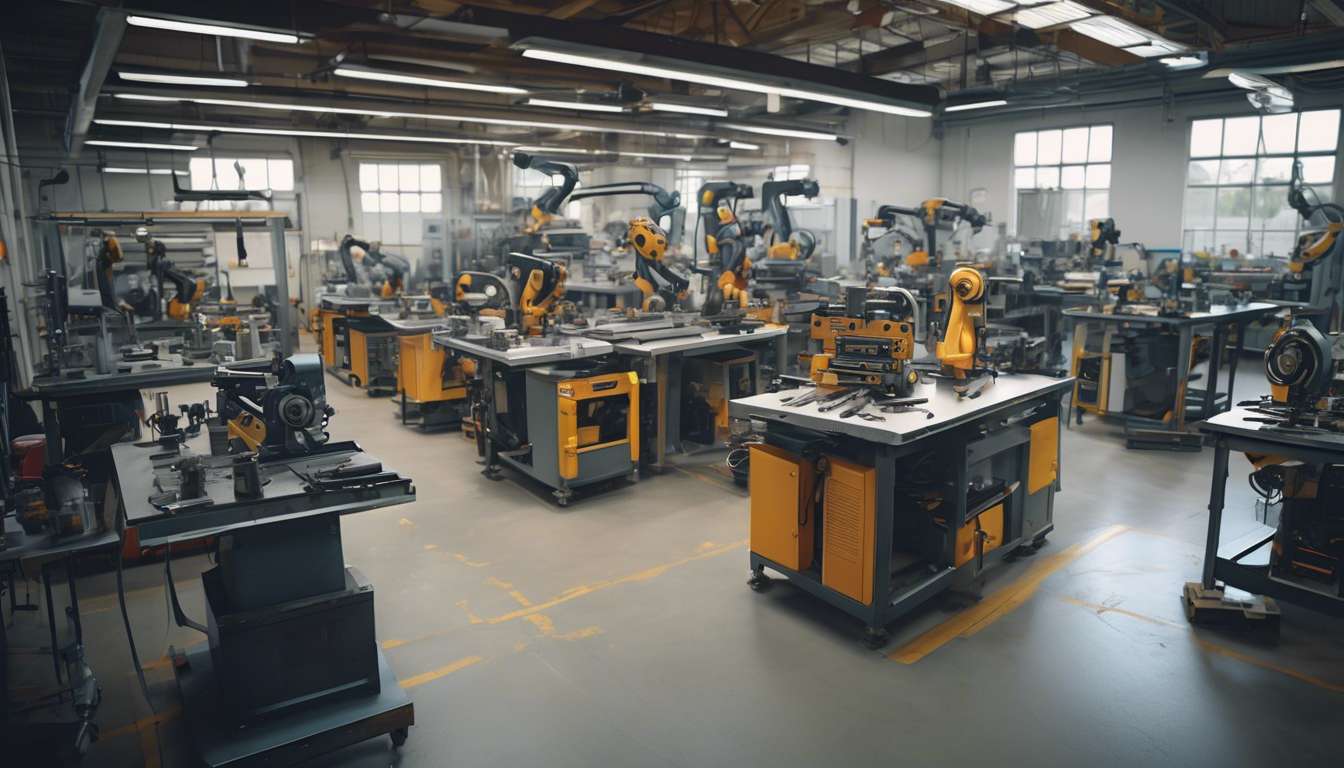The best Industrial tools and solutions for your business
In today’s rapidly evolving industrial landscape, the selection of appropriate tools and solutions plays a crucial role in ensuring operational efficiency, cost-effectiveness, and competitive advantage.
Industrial tools and solutions encompass a wide range of products and services designed to enhance:
- Productivity
- Safety
- Innovation
These are applicable across various sectors, including manufacturing, construction, and logistics.
Key Characteristics of the Best Industrial Tools:
- Functional Requirements: They meet specific needs effectively.
- Integration: They integrate seamlessly into existing systems.
- Durability: They offer long-lasting performance.
- Adaptability: They can adjust to different operational environments.
- User-Friendly: They have interfaces that are easy to use.
This article explores the latest advancements and top recommendations in industrial tools and solutions, providing insights into how these technologies can optimize business processes.
Focus Areas:
- Technological Compatibility: Ensuring tools work well with current systems.
- Return on Investment: Evaluating the financial benefits relative to costs.
- Scalability: Assessing the potential for growth and adaptation.
By leveraging cutting-edge tools and solutions, businesses can:
- Streamline operations
- Reduce downtime
- Position themselves for sustained growth
This is crucial in an increasingly competitive market environment.
If you’re interested in further exploring how these tools can benefit your specific industry, you might want to take a look here.
Top Industrial Tools Selection Criteria
Selecting the top industrial tools requires considering essential criteria like durability, efficiency, and cost-effectiveness.
Efficiency is a cornerstone for competitive advantage in the ever-evolving industrial landscape. Tools that enhance productivity through automation significantly reduce manual intervention, streamline processes, and increase output. The integration of automation not only optimizes operational efficiency but also minimizes human error, contributing to consistent quality and reliability.
Cost-effectiveness remains a critical factor in tool selection, ensuring that investments yield maximum returns. To determine the true value of a tool, a thorough analysis of initial costs against long-term savings is necessary. Selecting tools designed for longevity further supports cost-effectiveness by reducing the frequency of replacements and repairs.
Adaptability to various industrial applications provides additional value, allowing for seamless integration into existing systems. This adaptability fosters a sense of belonging among stakeholders, as it aligns with the collective goal of achieving operational excellence.
Thus, careful evaluation of these criteria leads to informed decisions, benefiting the entire organization.
Essential Focus Areas for Implementation
Implementing industrial tools effectively requires prioritizing key focus areas such as integration, training, and performance monitoring.
Integration ensures seamless connectivity between new and existing systems. This enhances efficiency and minimizes disruptions.
A structured approach to integration:
- Promotes a cohesive work environment
- Fosters a sense of unity among team members
Training is critical to equip employees with the necessary skills to utilize tools efficiently, thereby maximizing productivity.
Comprehensive training programs should:
- Be designed to accommodate various learning styles
- Ensure every team member feels valued and competent in their roles
Emphasizing automation within training:
- Allows for streamlined operations
- Reduces manual errors
- Increases consistency
Performance monitoring is essential to assess the cost-effectiveness and overall impact of implemented tools.
Regular evaluations provide:
- Insights into areas needing improvement
- Guidance for strategic adjustments for optimal outcomes
By focusing on these areas, businesses cultivate a culture of continuous improvement, aligning with collective goals and enhancing organizational belonging.
Implementing these strategies results in a more cohesive and efficient industrial environment.

Benefits of Advanced Industrial Solutions
Advanced Industrial Solutions
Advanced industrial solutions significantly enhance operational productivity, streamline processes, and drive innovation across various sectors.
Efficiency and Workforce Motivation
These solutions foster efficiency by:
- Reducing manual intervention
- Minimizing errors
Automated systems take precedence in handling repetitive tasks, allowing skilled labor to focus on complex operations. This not only optimizes resource allocation but also contributes to a more motivated workforce, a key component for businesses aiming to create a sense of belonging among employees.
Cost-Effectiveness and Quality
In terms of cost-effectiveness, advanced solutions:
- Reduce overhead by minimizing downtime and maintenance costs
- Ensure consistent production output
The initial investment in technology is offset by long-term savings and enhanced quality control, leading to superior product offerings.
Competitive Edge and Growth
Furthermore, the implementation of these solutions aligns businesses with industry standards, fostering a competitive edge in an ever-evolving market landscape.
Embracing innovation through advanced industrial solutions empowers organizations to remain relevant, adaptable, and poised for growth, ensuring their place in a collaborative and progressive industrial community.
